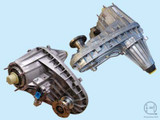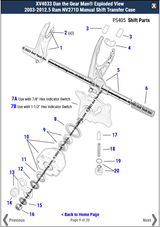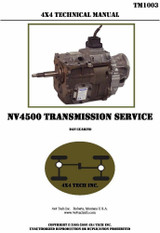Electric 4x4s and Light Trucks – Part 2
Electric 4x4s and Light Trucks – Part 2: Motors and Gearing Overview
July 13th, 2021
To build viable electrically driven replacements for Internal Combustion Engine (ICE) 4x4s and light trucks is much more complicated than it first appears due to the vast range of tasks typically performed by these vehicles. Unlike most passenger cars and heavy-duty trucks that are designed and used for just one primary purpose, 4x4s and light truck owners usually use their vehicle for many diverse and multiple tasks, including basic transportation, long distance trips, hauling/towing heavy loads, exploring, camping, and more.
How do electric 4x4s and light trucks differ from engine-powered ones? The simple answer is that an electric motor replaces the engine and a battery pack or fuel cell system replaces the gas (or diesel) tank. From an engineering standpoint, the answer is a bit more complex. This article will look at the functional differences and similarities of electric and ICE drivetrains and four different ways real-world manufacturers will build electric 4x4 vehicles within the next year or two.
If we disregard the limitations of current battery and fuel cell technology, electric motors are a much better choice for powering 4x4s and light trucks when compared to Internal Combustion Engines. Electric motors have a greater power-to-weight ratio (more torque output per pound of motor weight), and they are simple in design with few moving parts that make motors both more reliable and longer lived. Electric motors are also more efficient than Internal Combustion Engines at converting stored energy into work. Generally, an electric motor is 80%-90% efficient in converting stored (battery) or chemical (fuel cell) power to work. With ICE engines, efficiency is usually measured as thermal efficiency – the amount of available heat in the fuel that can be converted to work energy. A typical diesel engine will have a thermal efficiency of 30-45%, and a modern gasoline engine will have a thermal efficiency of 20-35%. All these figures measure just the energy conversion efficiency of the motor or engine themselves. Additional energy will be lost transmitting power to the wheels due to friction which will significantly reduce the efficiency percentages by an amount that will vary depending upon the specific drivetrain configuration.
To compare electric motor power to internal combustion engine power, we must look at torque instead of horsepower. This is because torque measures the capacity of a power source to do work, and horsepower (hp = torque x rpm ÷ 5252) measures the speed at which a particular task can be accomplished. The simplest way to define torque is a measurement of rotational or turning force. In the United States, torque is usually measured in pounds-feet (lb-ft) and expressed in vehicle power discussions as “pounds of torque.” For drivetrains that use some type of gearing, torque can be multiplied, and speed reduced through gear reduction by using a small gear to drive a larger gear or conversely, torque can be reduced, and speed increased using a big gear to drive a smaller gear (known as “overdrive”).
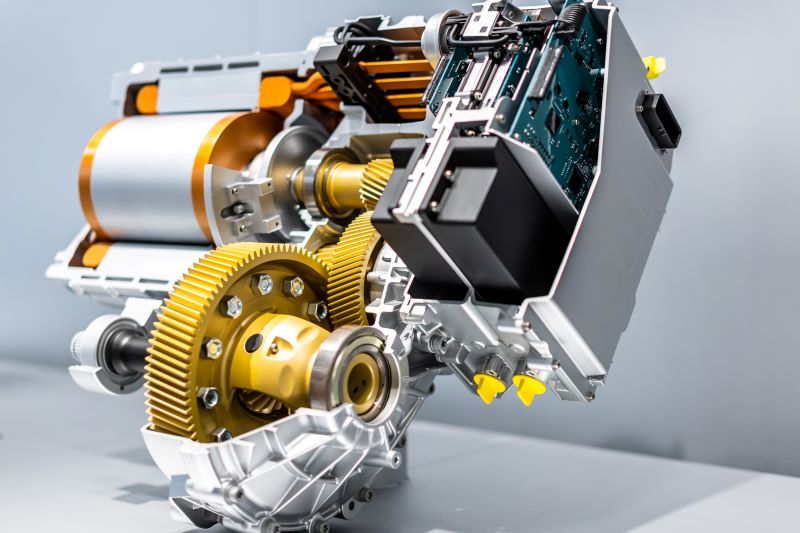
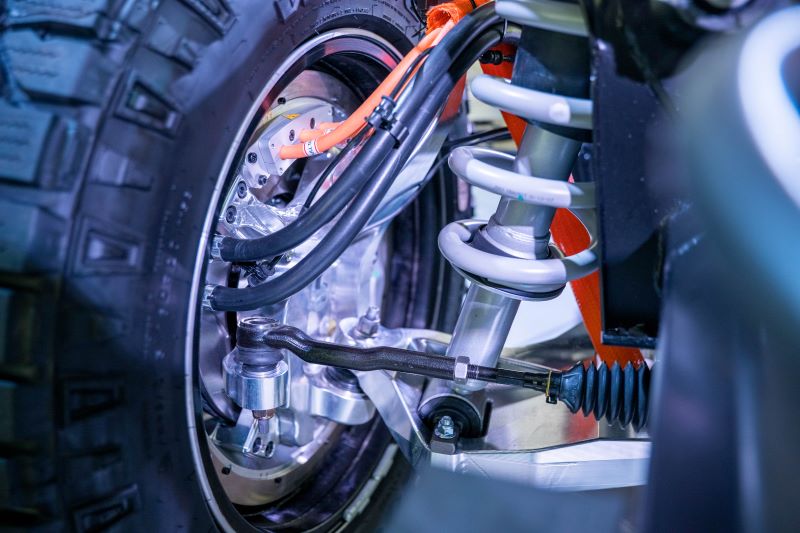
If you ever rode a bicycle with a multi-sprocket rear-wheel derailleur system, you could see and experience the effects of gearing. When you selected a small sprocket, you could go faster on level ground but ran out of power on hills unless you selected a bigger sprocket which reduced your speed but increased the torque you could apply to the rear wheel enabling you to pedal up the hill. Conventional 4x4 vehicles powered by gas or diesel engines are a lot like your multispeed bike, a selection of gears is used to match the limited torque and speed range of the engine to the work to be done. Most electric drivetrains, on the other hand, are more like a single-speed bicycle ridden by a champion racer which works fine for most situations but will have limitations when the terrain or load requires more torque than can be sustained.
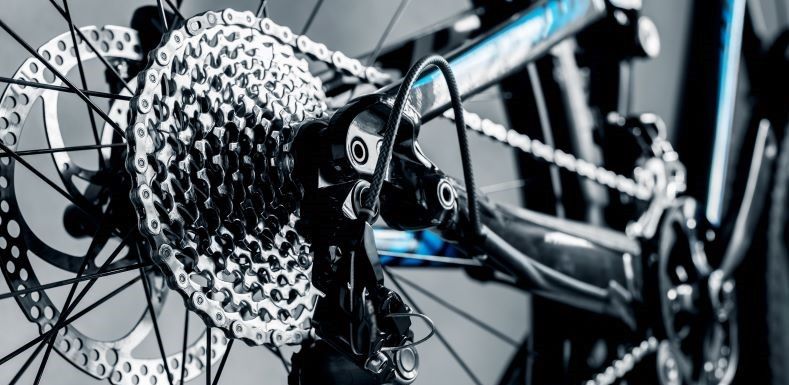
With a conventional 4x4 or light truck, the engine transmits torque to the wheels through a transmission, transfer case, driveshafts, and axles. The operating speed range of the engine is determined by the minimum revolutions per minute (rpm) required to maintain the engine combustion process and the maximum rpm that the engine design can safely operate at. This range will vary from engine to engine but will usually range between 700 rpm and 3500 rpm for diesels and from 600 rpm to 5000 rpm for gas engines. To provide all power needs from high-torque, low speed launch to high-speed cruising, the engine speed is reduced, and the torque is multiplied through gearing in the transmission, transfer case, and axles. Maximum combined gear reduction and torque multiplication ratios excluding what is available from an automatic transmission torque converter, will usually range from 13:1 to 25:1 for high range and at least double that for low range. In addition, the inertia of the rotating engine flywheel provides an energy boost when momentary load spikes occur. The torque output of the engine is continuous, but the amount of available torque will vary widely depending upon rpm.
An electric drive 4x4 uses one or more motors to provide propulsion power. The electric motors may be Direct Drive, where motor power is transferred directly to the wheel with no torque multiplication, or Gear Drive, where torque multiplication and shaft speed reduction are accomplished through gearing. With electric drive motors, there will be a continuous torque rating that is comparable to engine torque ratings and a peak torque rating for short duration (a minute or two max) high power demands typically experienced when starting from a dead stop or rapid acceleration. Most electric 4x4s will be single speed, and those with gear reduction will have ratios that are quite modest compared to conventional drivetrains, usually in a range of 7:1 to 12:1. There may also be an option for a low range which will roughly double the gear reduction and provide double the torque multiplication. Since electric motors provide power on demand, there is no stored energy from a rotating flywheel that can help launch a stationary vehicle; instead, the motor relies on its ability to develop a short lived, low rpm peak torque boost to overcome inertia and get the vehicle moving.
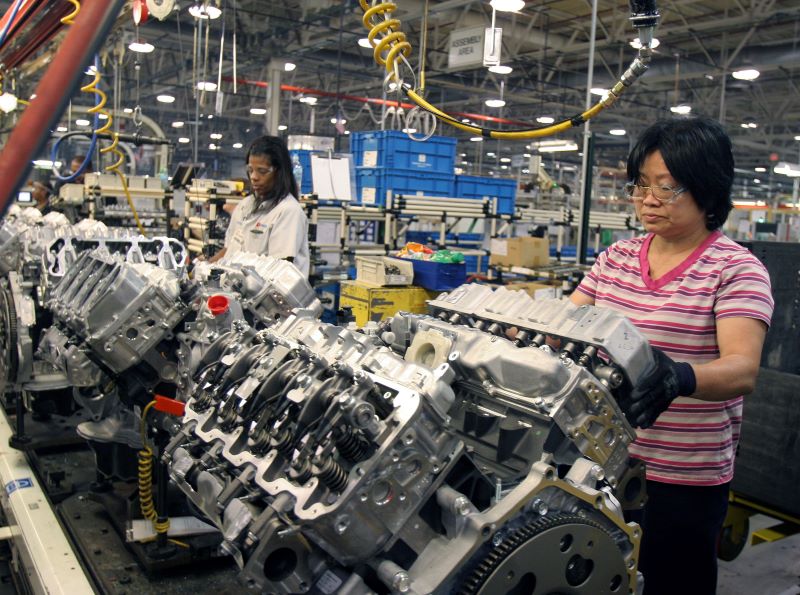
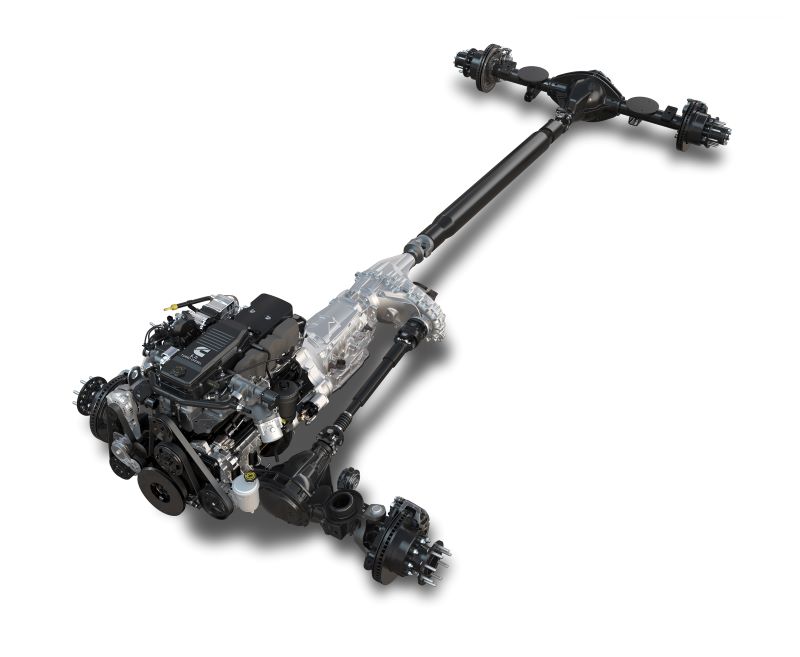
The torque ratings listed for most electric 4x4s dwarf the typical engine torque ratings we are used to. When GM advertises an 11,000-pound torque rating for the upcoming Hummer EV electric SUV, the figure they are stating is the theoretical torque at the wheels after gear reduction and not the motor torque alone. This practice may make it a little hard to compare power capabilities between engine and electric vehicles. But, knowing the maximum torque rating at the wheels is important for 4x4s and light trucks due to the huge amount of LOW-SPEED power required to launch heavily loaded vehicles or negotiate rough terrain. At launch, when towing, or when crawling up a steep, rocky trail, we need lots of continuous low-speed, high-torque power. Although 11,000 pounds of torque sounds like a lot, it is only 1/2 to 1/3 of the theoretical low range/low gear torque available from many of today’s engine-driven 4x4 trucks.
The simplest way to build an electric vehicle is to use a conventional drivetrain coupled to an electric motor delivering power to the wheels via a transmission, transfer case, driveshafts and axles. At first glance, this type of powertrain would seem inefficient, and, in some ways, it is, but there are also advantages. Jeep has released details of the Wrangler Magneto Battery Electric Vehicle (BEV) concept that takes this approach. Advantages include chassis commonality with engine, fuel cell, or range extender versions, only one motor to control and cool, the use of existing proven and reliable components in the drivetrain, service familiarity by existing service technicians, and for work trucks, the ability to power auxiliary pumps or Power Take Offs (PTOs) from the transmission. In addition, because of the flexible and wide-range gearing provided by the transmission/transfer case/axle combination, we can have final drive ratios from as fast as 3:1 to as slow as 70:1. On the downside, a significant percentage of power will be lost through friction and parasitic loss, especially at the axles where the power direction is changed 90 degrees through hypoid gearsets. Also lost is the ability to control individual wheel speed electrically.
The majority of 1st generation electric drive 4x4s and light trucks will use two to four liquid-cooled electric motors with each motor coupled to a gear reduction unit to increase torque at the wheels. Multi-motor and geared electric drivetrains will experience a loss of overall energy efficiency with each motor or gearset contributing to a reduction of the overall energy efficiency of the vehicle. In multi-motor configurations, the gear reduction ratios for each motor may be the same, or they can be different. Using different gear reduction ratios for each motor along with a motor controller that synchronizes wheel speed is one way to provide more low-speed torque. The first generation of production electric drive 4x4 light trucks will be both technology demonstrators and daily drivers. Three 4x4 models from startup vehicle manufacturers take significantly different paths to provide power to the wheels. All three are Battery Electric models that take advantage of the high torque ratings typical of electric motors at all but the lowest speeds.
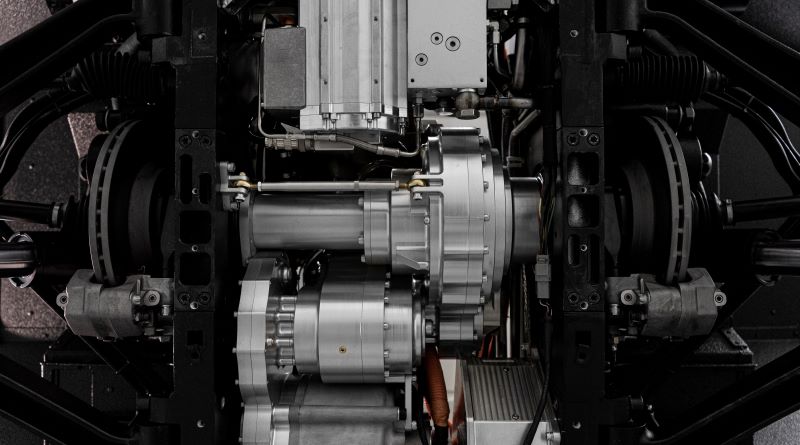
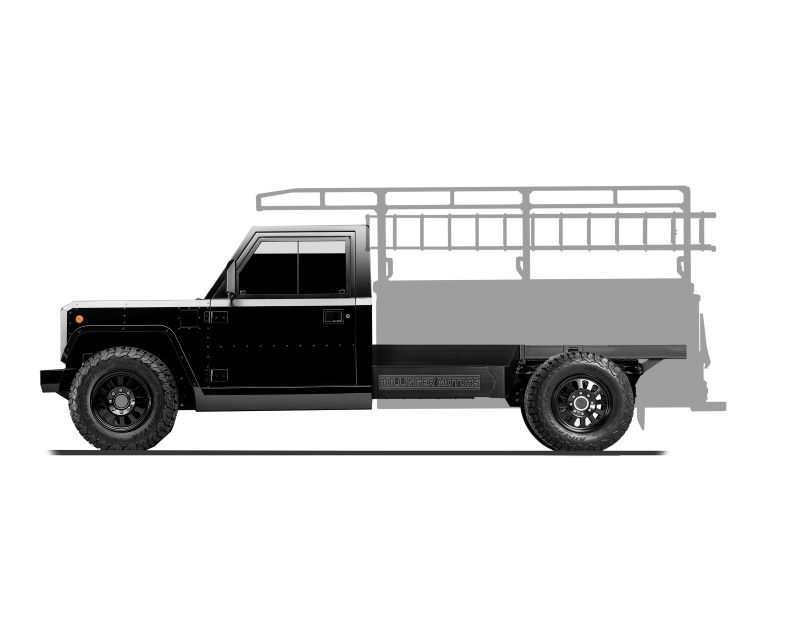
The $125,000, Class 3 (1 ton) rated Bollinger Motors B series pickup and chassis cab trucks will have one front and one rear electric motor with a combined 668 lb-ft. of motor torque. A 2-speed synchronized gearbox is coupled to each motor. A Constant Velocity axle shaft connects to a geared hub at each wheel position. Final drive ratios are 11.4:1 (high range) and 22.5:1 (low range), plus a neutral position that is available for flat towing the vehicle behind an RV or another truck. While the geared torque multiplication is impressive compared to other electric vehicles, the Bollinger tow rating is only 7,500 pounds which is exceptionally low for a 1 ton. Bollinger B-Series 4x4s should perform well in most off-road situations, including rock crawling. The estimated U.S. Environmental Protection Agency (EPA) driving range is 200 miles.
Four direct-drive wheel motors are used by the $52,000 Lordstown Endurance, which has an estimated range of 250 miles on a full charge. These liquid-cooled Elaphe 150 horsepower motors are engineering marvels that could revolutionize much of the motor vehicle industry, but since the motors are direct drive units with no gearing, the Endurance will be more akin to an All-Wheel Drive (AWD) SUV instead of a multi-purpose 4x4 truck. The wheel motors should provide adequate power with stock diameter tires for most purposes but will most likely prove unsuitable for rock-crawling and hauling/towing heavy loads due to their comparatively low maximum torque rating. The Endurance is rated for a modest 2,000 lb-ft continuous torque and has a peak torque rating of 4,400 lb-ft.
The four motor Rivian R1 series 4x4s are priced to start at around $67,500 and will be rated for a 300-mile range. Each motor will be geared and drive the adjacent wheel hub via a constant velocity axle shaft. The speeds and rotation direction of each motor are individually adjustable through the motor controller. This feature can be used to turn the vehicle around within its own length like a skid steer loader by having the tires on one side move forward and the other side move backwards. Published maximum tow rating for the R1T pickup is listed at 11,000 pounds which is impressive. However, the driving range will be severely reduced when towing heavy loads. Combined maximum torque at the wheels will be just over 10,000 lb-ft.
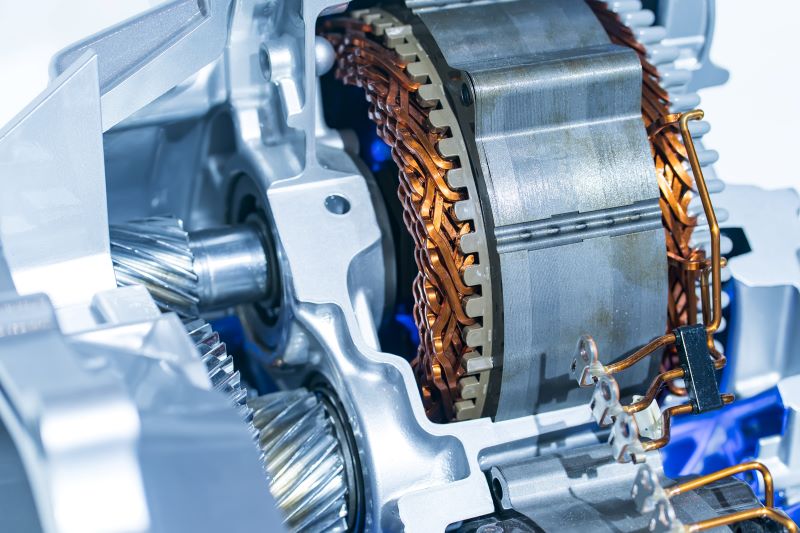
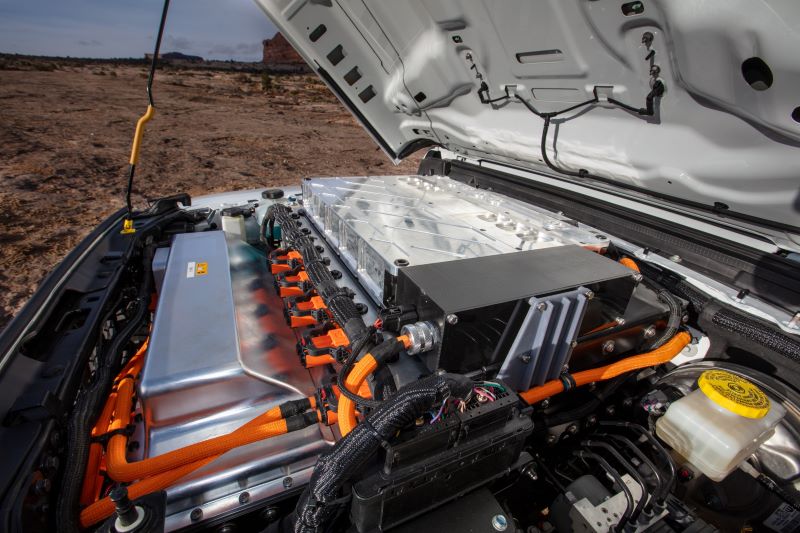
It will take real-world use to determine if any, all, or none of the electric drivetrain layouts described above will remain in production for years to come. From the Jeep Wrangler Magneto BEV to the Lordstown Endurance, vehicle manufacturers will offer future electric vehicle owners a wide choice of 4x4 drivetrain types. Despite all the innovation and engineering talent these vehicles will bring to the market, range and load limitations imposed by current battery and cooling technology will limit their acceptance for many potential buyers.
Next Article will be about Batteries and Fuel Cells
Latest News
2003-2012 Ram NV271D Transfer Case Fluid and Torque Specifications, plus Recommended Mainteinance Schedule
The New Venture NV271D Manual Shift Transfer Case was the base transfer case for 2003-2012 Dodge and...
New Exploded View for 2003-2012.5 Dodge Ram Manual Shift NV271D Transfer Cases!
New, Easy-to-Use, Interactive XV4033 Exploded View by Dan the Gear Man® for 2003-2012.5 Dodge...
New Tools, Parts, Exploded Views, CAD Drawings, and Videos added in January 2023
We have added a number of new tools, parts, Exploded Views, CAD drawings, and videos to our websi...
AWD vs Automatic 4x4 Transfer Cases
Theory of an Automatic 4x4 Transfer CaseMany 4x4 truck owners ask what the difference is in a vehicl...
Video Updates
I am excited to announce that we have a new format for our service videos. Thes...
Torque King 4x4 to be Featured on 'Viewpoint' with Dennis Quaid
Something exciting is in the works for Torque King 4x4. Read on to find out all the details!Small...


